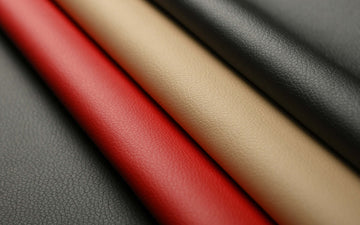There’s no denying that the production of leather involves the killing of animals. However, most people don't realize the real impact leather production has on animals, workers, and the environment as a whole.
It’s a common misconception that leather is produced only by cows, and is considered a ‘by-product’ of the meat industry. That is, produced as a result of the meat industry, with skins collected directly from slaughterhouses that produce meat. However, though cows produce the bulk of leather used, leather is produced from a wide variety of animals, including kangaroos, pigs, crocodiles, lizards, horses, and even unborn calves taken prematurely from their mothers!
Additionally, despite the narrative that leather is sustainable thus environmentally-friendly, extensive rearing of livestock has a serious environmental impact, such as deforestation, water, and gas emissions. Tanning in particular, is one of the most toxic phases in leather production. As well as being toxic for the environment, it also has serious impacts on tannery workers, some of which are children as young as ten, or mothers with young children at home.
While it can be argued that a quality leather lasts 15-20 years longer than the average faux leather, rubber and leather still make up more than 3.4 percent of all material-specific waste. Add to that the environmental impact of production, and you can see that the idea that leather fashion has a lower environmental impact is just a myth.
Meat By-products?
Sure, the leather industry is dependent on the dairy and meat industry, to produce cow skins that can then be turned into leather. But it also works the other way around. The dairy and meat industry is just as dependent on the leather industry to turn a profit. With leather as a multi-million dollar industry on it's own, it’s a co-product, rather than a byproduct, with all three industries feeding into and gaining from each other.
Once you realize that most leather companies are designed, not to minimize cruelty and environmental impact, but to maximize profit, it hits differently. Not only does the deforestation caused by cattle, pig or goat farming have a devastating environmental impact, but in some countries, wild animals like boars, crocodiles, and in Australia, even kangaroos, are often illegally poached for both meat, and more importantly, leather hides.
Leather Alternatives
One of the downsides of vegan leather is that though it’s not cruel to animals, certain materials may have a serious environmental impact. PVC vegan leather is made usually made of plastics, which don’t break down and also don’t last well, leading to more landfill waste. Luckily, there are more eco-friendly leather alternatives such as microfiber vegan leather, cork, pinatex, and paper.
With so many alternatives to leather for high-quality fashion, you’re sure to find one you like that’s both environmentally and animal-friendly!
Learn more about the impact of the leather industry here.









